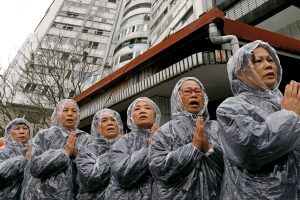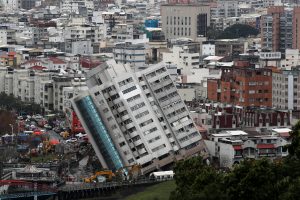
By Philip Pullella
VATICAN CITY (Reuters) – An unholy war of words has broken out among Vatican and Catholic officials over the Holy See’s rapprochement with Communist China, with cardinals, archbishops and priests caught in an undiplomatic crossfire.
In the past few days, one cardinal has accused another of spouting “nonsense” and a priest accused an archbishop of being so naive about China that he was like Alice in Wonderland.
The exchanges came as the Vatican and China moved closer to an accord on the appointment of bishops in what would be an historic breakthrough and a precursor to a resumption in diplomatic relations after 70 years.
Any deal was bound to be controversial because of concessions the Vatican would have to make to a government that has kept religion under its thumb. But the accusations have become exceptionally shrill as diplomacy has collided with passion.
Father Bernardo Cervellera, head of the AsiaNews agency, which specializes in China, accused Archbishop Marcelo Sanchez Sorondo, the head of the Pontifical Academy of Social Sciences, of being “naive”.
In an interview this week, Sanchez Sorondo praised China, saying that Chinese today were those who are perhaps best implementing Church teachings on social issues, such as concern for the environment and human dignity.
“We can understand that in the heat of desire for relations between China and the Vatican one can be doting and exalt Chinese culture … but adulating China is an ideological affirmation that makes a laughingstock of the Church,” Cervellera wrote in an editorial headlined “Sanchez Sorondo in Wonderland”.
Catholics in China are split between “underground” communities that recognize the pope and a state-controlled group where bishops are appointed by the government in collaboration with local Church communities. Critics have blasted the deal because it would involve accepting the legitimacy of bishops appointed by the government.
The war of words also reached the stratosphere of Church hierarchy, cardinal versus cardinal.
The Vatican rebuked Cardinal Joseph Zen, 86, the outspoken former bishop of Hong Kong, after he accused it of “selling out” China’s underground Catholics to the communists. Zen, known for his feistiness, did not take it lying down.
He accused the Vatican’s chief diplomat, Secretary of State Cardinal Pietro Parolin, of speaking “nonsense,” after Parolin said in an interview that the aim of dialogue was the greater good and that the Vatican understood the “pain” of Chinese Catholics.
Zen retorted in his blog on Monday: “Oh! This man who lacks faith, how would he understand what is real pain?!”
A Vatican source has said the deal could be signed in the next few months. The clerical gloves are expected to stay off at least until then.
(Additional reporting By Venus Wu in Hong Kong, editing by Larry King)










